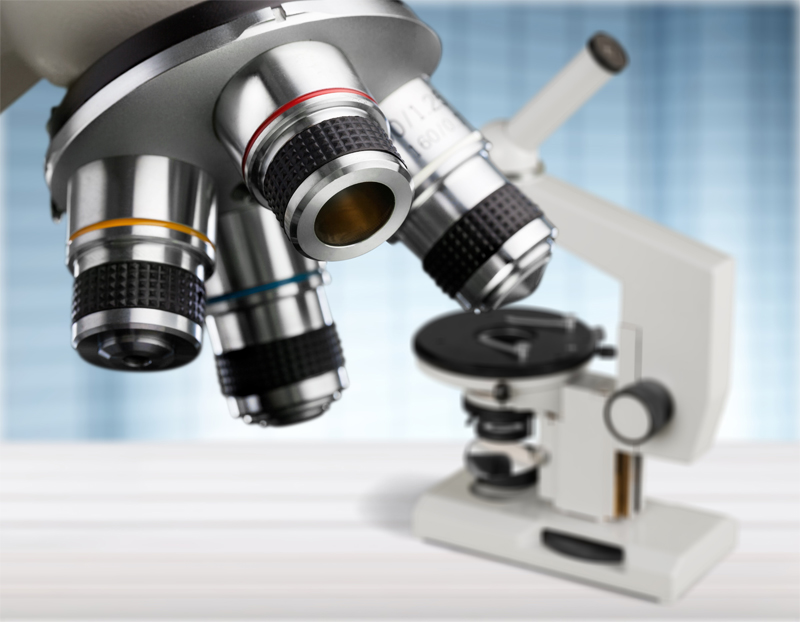 The use of microscopes primarily applies to the extreme magnification of specific specimens that are too small to be seen by the eye alone. Most microscopes make use of light that passes through the objects that the lenses and other components manipulate. A popular use for microscope is to view living organisms.
The use of microscopes primarily applies to the extreme magnification of specific specimens that are too small to be seen by the eye alone. Most microscopes make use of light that passes through the objects that the lenses and other components manipulate. A popular use for microscope is to view living organisms.
However, do you know that microscopes may also be used also for viewing and magnifying tangible items? There are metallurgical microscopes that can do such a job and they’re in demand as well.
How Do Metallurgical Microscopes Work?
Metallurgical microscopes magnify opaque objects that light cannot pass through, unlike other microscopes that require thin and transparent specimens. You can magnify metals and other solids through frontal illumination. These microscopes can magnify surface details up to 500x and 1000x.
Metallurgical microscopes work based on reflected light microscopy and use EPI illumination unlike its biological counterpart that works on transmitted light. The objective and eyepiece lens systems direct the illumination and guide its path to be able to produce clear images of the surface details of the material.
The light must first travel from the lamp compartment of the microscope and go through the collector lens. It delivers the light to the vertical illuminator where the diaphragms and the aperture also direct it to the beam splitter, reaching the eyepiece lens.
The two components, aperture and field diaphragm, control the lighting that passes through the objective lens and decrease the glare to adjust contrasts and enhance the clarity of the material’s surface. A metallurgical microscope also come in monocular and trinocular heads, the latter allowing camera attachments. With digital microscope cameras, you can take pictures and videos for monitoring purposes.
If you’re planning to purchase one, you can find metallurgical microscopes from microscopeinternational.com that are available in different brands, sizes, and illumination types.
Features Unique To Metallurgical Microscopes
The following imaging modes makes metallurgical microscopes different from their counterparts for biological observations:
- Differential Interference Contrast (DIC) – it’s a microscopy technique that renders 3D-like imagery with a significant amount of contrast to specimens under the microscope. It’s used with IR or infrared light for the imaging of thick biological material such as brain matter for better observation.
- Polarized Light – it’s the type of illumination by the polarizer located adjacent to the microscope eyepiece. It’s mostly used for viewing crystalline formations of non-cubic metals.
- Darkfield Illumination – it’s the type of lighting wherein central light is blocked to allow oblique rays to strike transparent and unstained specimens. This way, the images are reflected at slanting angles with a dark background that allows the revelation of non-flat surfaces like edges, pores and grain boundaries.
- Brightfield Illumination – it’s another lighting option that allows you to view dark objects with a light background. A popular microscopy technique, it safely allows the viewing of live cells without staining by making cross-section observations of densely structured specimens possible. The thicker the specimen, the more the microscope absorbs light.
Metallurgical Vs. Biological Objective Lens Design
Objective lenses have intricate multi-element designs that make them the most crucial part of the microscope. They’re the closest to the material in observation, gathering light and producing precise detailing for quality image formation and full magnification. The objective lens is also where metallurgical and biological microscopes differ.
Metallurgical objective lenses use episcopic illumination. It’s also known as vertical illumination, wherein the light is coming from above. The light is then directed to the surface and then bounces back to the objective lens. The barrel of the objective lens for this microscope type typically indicates BD for the brightfield and darkfield combination. You will also see an EPI mark that stands for EPI illumination. The barrel is also functional without a coverslip when you spot an infinity symbol followed by figures /0.
Biological objective lenses, in turn, uses diascopic illumination, or transmitted illumination which is coming from under the specimen. This type of microscope typically has multiple noses or barrels that revolve around the specimen.
The lens of the biological variant may either come with a coverslip, or none if there’s an NGC, or no glass cover indication on the barrel. The markings will also include the thickness of the coverslip (/0.17 or 160/0.17 or 170/0.17 for fixed tube length system). It may produce blurry images without the cover.
The Three Types Of Metallurgical Microscope
Below are the three common types of metallurgical microscopes:
1. Upright Metallurgical Microscope
This type of microscope may come in either one of the two stands: the traditional microscope and the pillar stand. The pillar stand allows more flexibility for larger specimens that need illumination.
2. Inverted Metallurgical Microscope
The light is coming from beneath the stage of the microscope to illuminate the material through the objective lens. The illumination is then reflected to the eyepieces. The stage can also accommodate various sizes of specimens as nothing is obstructing the area.
3. Semiconductor Metallurgical Microscope
This type is a combination of the upright and inverted variant. The light is coming from above, and the length of the neck is large enough to accommodate large metal wafers.
Applications Of Metallurgical Microscopes
Laboratory works do not only include microscopes that observe live microorganisms. Some, like the metallurgical microscope, are used for the inspection of inanimate solid objects.
Since Henry Clifton Sorby’s creation of the metallurgical microscope in 1863, it has been used in various industries that need close observation like metals, ceramics, plastics, glass, textiles, fibers and other surfaces. The metallurgical microscope can even be used to examine food and natural sodium content, ingredients, additives, and more.
This type of microscope is mainly used to spot defects, features, inclusions, to measure the covering or film, and to assess grain sizes, corrosion, electroplating, painting, and other effects of processing. 

Conclusion
A metallurgical microscope is different as it uses light coming from above the specimen. Compared to biological microscopes, this type observes solid non-living matter that light can’t pass through. They’re used in different industries, including the production of metallic products, semiconductors, plastics, and more.
The microscope is essential for the detailed examination of surfaces at a microscopic level. It can spot uneven and rough spots on various materials that may have formed during production that must be corrected. It’s a vital instrument that helps humankind further improve materials and to determine the causes behind anomalies on objects.

